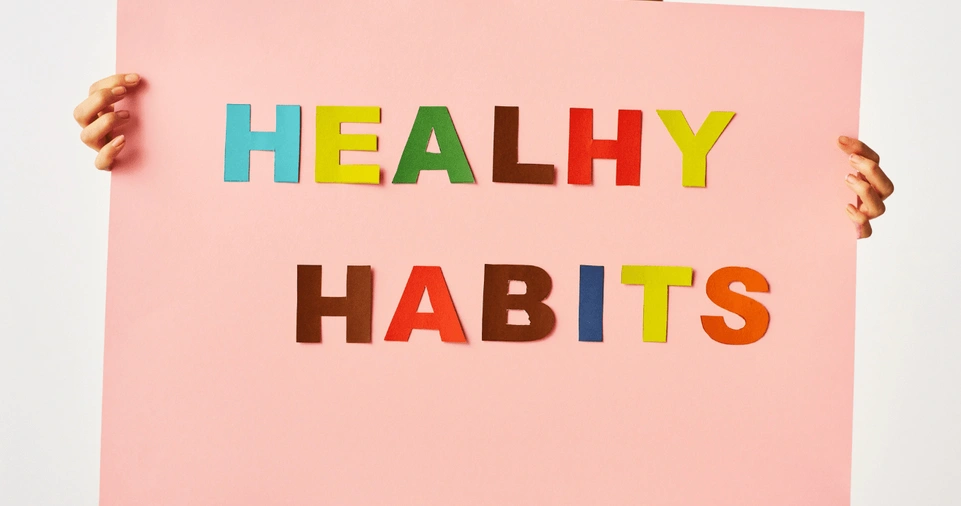How to Build Healthy Habits That Last starts with understanding that sustainable change comes from consistency, not motivation.
If you’ve struggled to stick to new routines, you’re not alone—most people abandon habits because they try to do too much too fast.
The key lies in creating simple, repeatable actions tied to your daily life. Whether you’re aiming to exercise regularly, eat better, or sleep more, the success of these goals depends on how well you integrate them into your routine.
In this guide, you’ll learn proven strategies to build healthy habits that stick, avoid common pitfalls, and reshape your environment for success.
If you’re ready to break the cycle of short-term fixes, it’s time to master the science of habit formation.
Why Healthy Habits Matter
Before diving into how to build habits, let’s explore why they are so important. Habits influence 40% of our daily behaviors.
That means almost half of what you do is automatic. Establishing positive habits gives you long-term benefits with less mental effort over time.
Benefits of Healthy Habits:
- Increased energy and productivity
- Improved mental health
- Reduced risk of chronic diseases
- Better relationships
- Higher self-esteem
When you learn to build the right habits, you essentially automate success.
The Psychology Behind Habit Formation
Habits are formed through a neurological loop called the Habit Loop, consisting of three main components:
- Cue (Trigger): What initiates the behavior
- Routine (Behavior): The actual habit or action
- Reward: The benefit or positive feeling you get after completing it
Understanding this loop allows you to manipulate it in your favor.
Example:
- Cue: You wake up and see your running shoes by the bed.
- Routine: You go for a morning jog.
- Reward: You feel energized and accomplished.
ALSO READ: How to Start Gaming as a Beginner?
Steps to Build Healthy Habits That Stick

Let’s break down the process of building lasting healthy habits into clear, actionable steps.
Start Small and Specific
Trying to change everything at once rarely works. Instead, pick one small habit and define it clearly.
Example: Instead of saying “I want to eat healthier,” say “I’ll eat one vegetable with lunch each day.”
Small wins build confidence and momentum.
Attach New Habits to Existing Ones
This is called habit stacking, a method popularized by James Clear in his book Atomic Habits. It leverages existing routines as anchors.
Formula: After [current habit], I will [new habit].
Example:
- After I brush my teeth, I will stretch for 2 minutes.
- After I make coffee, I will drink a glass of water.
Make It Easy and Accessible
Reduce friction by making your habit convenient.
Tips:
- Lay out workout clothes the night before.
- Keep healthy snacks at eye level.
- Use a habit-tracking app or journal.
The easier it is, the more likely you are to stick to it.
Use Positive Triggers and Reminders
Visual or auditory cues can remind and motivate you.
- Sticky notes on your mirror
- Phone alarms
- Daily calendar reminders
Reminders reduce forgetfulness and strengthen consistency.
Track Your Progress
Tracking makes habits feel rewarding and helps you stay accountable.
Tracking Tools:
- Habit tracker apps (e.g., Habitica, Streaks)
- Bullet journal
- Printable habit calendars
Be Patient and Consistent
Research shows it takes 66 days on average to form a new habit—not 21 as the myth says.
What matters:
- Consistency over intensity
- Progress over perfection
Missing a day won’t ruin your habit. The key is to get back on track the next day.
Reward Yourself
Incorporate small rewards to make your habits more enjoyable.
Examples:
- After a week of workouts, treat yourself to a new playlist.
- After consistent meal prepping, enjoy a fun dinner out.
Rewards reinforce your habit loop.
Common Healthy Habits to Consider
Here are a few high-impact healthy habits you can implement into your daily life.
| Healthy Habit | Description | Benefit |
|---|---|---|
| Drinking more water | Aim for 8+ cups a day | Improves hydration and energy levels |
| Daily movement | Walk, yoga, or exercise for 30 mins | Boosts heart health and mood |
| Mindful eating | Eat without distractions | Reduces overeating |
| Sleep schedule | Sleep/wake at the same time daily | Enhances mental clarity and immunity |
| Practicing gratitude | Write 3 things you’re grateful for | Improves mood and perspective |
| Digital detox | Limit screen time before bed | Enhances sleep quality |
How to Break Bad Habits
Just as you can build habits, you can break ones that no longer serve you.
Step 1: Identify the Trigger
What situations or emotions lead to the habit?
Example: Boredom triggers mindless snacking.
Step 2: Replace the Behavior
Substitute a healthier habit in its place.
Example: Instead of snacking, go for a short walk or drink herbal tea.
Step 3: Create Friction
Make the bad habit harder to do.
- Unsubscribe from time-wasting apps
- Keep junk food out of sight
- Use timers to block access to distractions
ALSO READ: How to Choose Clothes That Flatter Your Body Type?
Using Environment to Reinforce Good Habits

Your environment shapes your behavior more than motivation does.
Tips to Reshape Your Environment:
Keep gym clothes visible
- Store healthy food at eye level
- Place a book on your pillow as a bedtime cue
- Put your phone in another room when working
- Design your surroundings to make good habits easier and bad habits harder.
Mindset Shifts That Support Habit Building
Your beliefs play a huge role in your success. Here are some mindset shifts to adopt:
| Old Mindset | New Mindset |
|---|---|
| “I have no self-control.” | “I can build discipline gradually.” |
| “I failed again, I’m not cut out for this.” | “Every setback is a learning step.” |
| “I’m just lazy.” | “I need a better system, not more willpower.” |
Habits are built through systems, not motivation alone.
How to Stay Motivated Long-Term
Motivation can fade. The key is to design habits that continue even when you’re not motivated.
Strategies:
- Accountability: Share your goals with a friend or group.
- Visual cues: Keep habit trackers or vision boards visible.
- Adjust goals: Reassess your habit to ensure it still aligns with your life.
- Plan for setbacks: Know what you’ll do when life gets hectic.
Real-Life Example: Building a Morning Routine
Let’s say your goal is to create a healthy morning routine. Here’s how it could look using habit-building principles:
Cue: Alarm goes off
Routine:
- Drink a glass of water
- 10 minutes of stretching or movement
- 5 minutes of journaling or gratitude
- Healthy breakfast
Reward: Calm, focused start to the day
By repeating this consistently and tweaking it to fit your lifestyle, it becomes second nature.
How to Use Technology to Support Habit Building?
Apps and digital tools can help you stay consistent and accountable.
Recommended Apps:
| App Name | Purpose | Best For |
|---|---|---|
| Habitica | Gamifies habit building | People who like RPGs and games |
| Streaks | Simple streak tracking | Apple users wanting minimal design |
| MyFitnessPal | Nutrition tracking | Tracking food and water intake |
| Calm | Meditation and mindfulness | Reducing stress and improving focus |
| Todoist | Task and habit management | Organizing routines |
Building Habits in Different Life Areas

Healthy habits aren’t just for fitness or eating. You can apply these strategies in every area of your life.
Examples by Category:
| Category | Habit Example |
|---|---|
| Health | Walk after meals |
| Productivity | Plan tomorrow’s tasks before bed |
| Relationships | Schedule weekly catch-ups |
| Financial | Automate savings every payday |
| Mental Health | 5-minute daily mindfulness practice |
ALSO READ: How to Choose the Right Business Name?
Conclusion
Building healthy habits that last isn’t about radical change—it’s about small, smart steps done consistently.
Focus on one habit at a time, connect it to something you already do, and reward yourself for progress. Over time, these little actions add up to major transformation.
Remember, it’s not about perfection—it’s about direction. Whether you’re looking to improve your fitness, mindset, productivity, or relationships, healthy habits are the foundation.
FAQs
Q: How long does it take to form a habit?
It varies, but on average, it takes 66 days to form a lasting habit. Simple habits take less time, complex ones more.
Q: What if I miss a day?
Missing one day won’t ruin your progress. Just restart the next day. Consistency is what matters over time.
Q: Can I work on multiple habits at once?
You can, but it’s more effective to focus on one or two habits at a time until they’re automatic.







